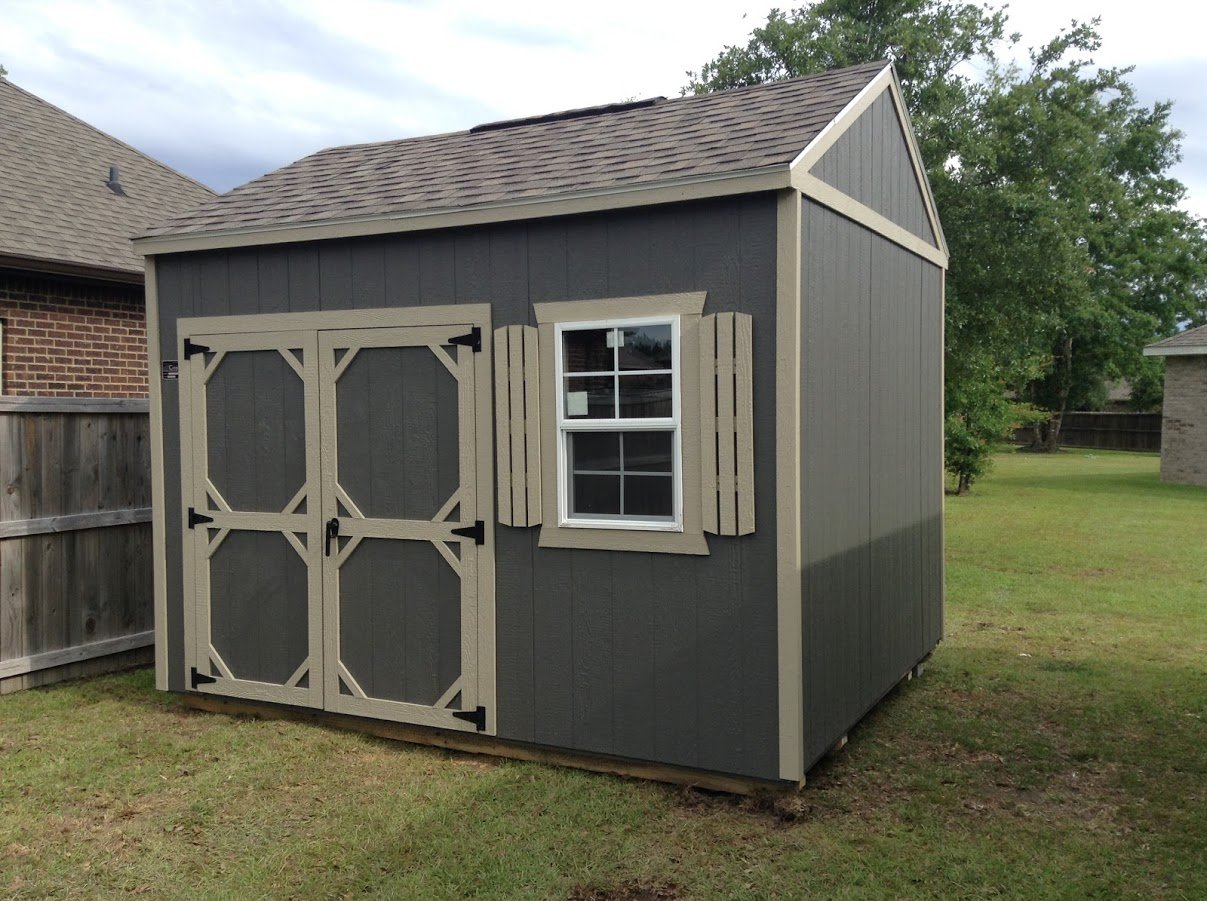
Let’s face it, when you buy a shed, you want to picture it perfectly manicured in your backyard. You want it to last for years to come. You want to know you’re getting a good deal, that you didn’t overpay for the quality you’re receiving. You also want to know that when you set it in your backyard, that it’s not going to rot or get termite damage.
So, if you buy a Cook shed, what should you put underneath to protect your shed? It’s a great question. One thing to note is that below we are only answering for OUR sheds, as most others don’t build their sheds to the standards we’ve set for ourselves.
Option #1: Nothing
That’s right, you don’t actually have to put anything underneath your Cook shed. We decided long ago to invest in higher grade materials for our construction process so our buildings can be placed directly on the ground. It’s why we’re able to offer a lifetime warranty against fungal decay and termite damage.
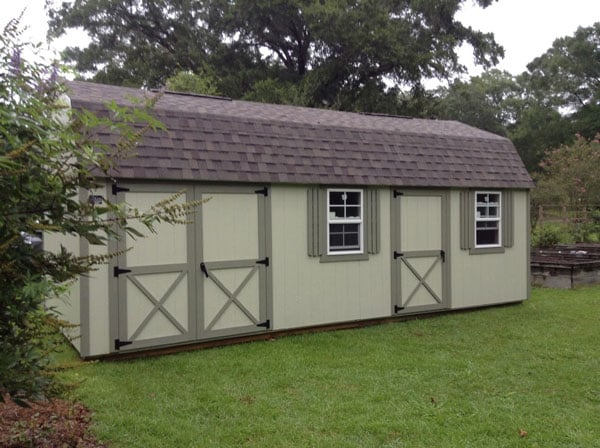
As co-founder and president Greg Cook says, don’t just ask about the features, but ask what the consequence of not having the feature is. So, for us, we don’t want our customers to experience rot or termite damage, even if they need to place the shed directly on a flat piece of ground on their property. Watch below as Greg explains a few consequences of choosing a shed other than a Cook shed.
Options #2-4: Concrete, Gravel or Mulch
Now, even though a Cook shed doesn’t need anything underneath it, it doesn’t mean you can’t add something. But, it’s strictly up to your personal preference.
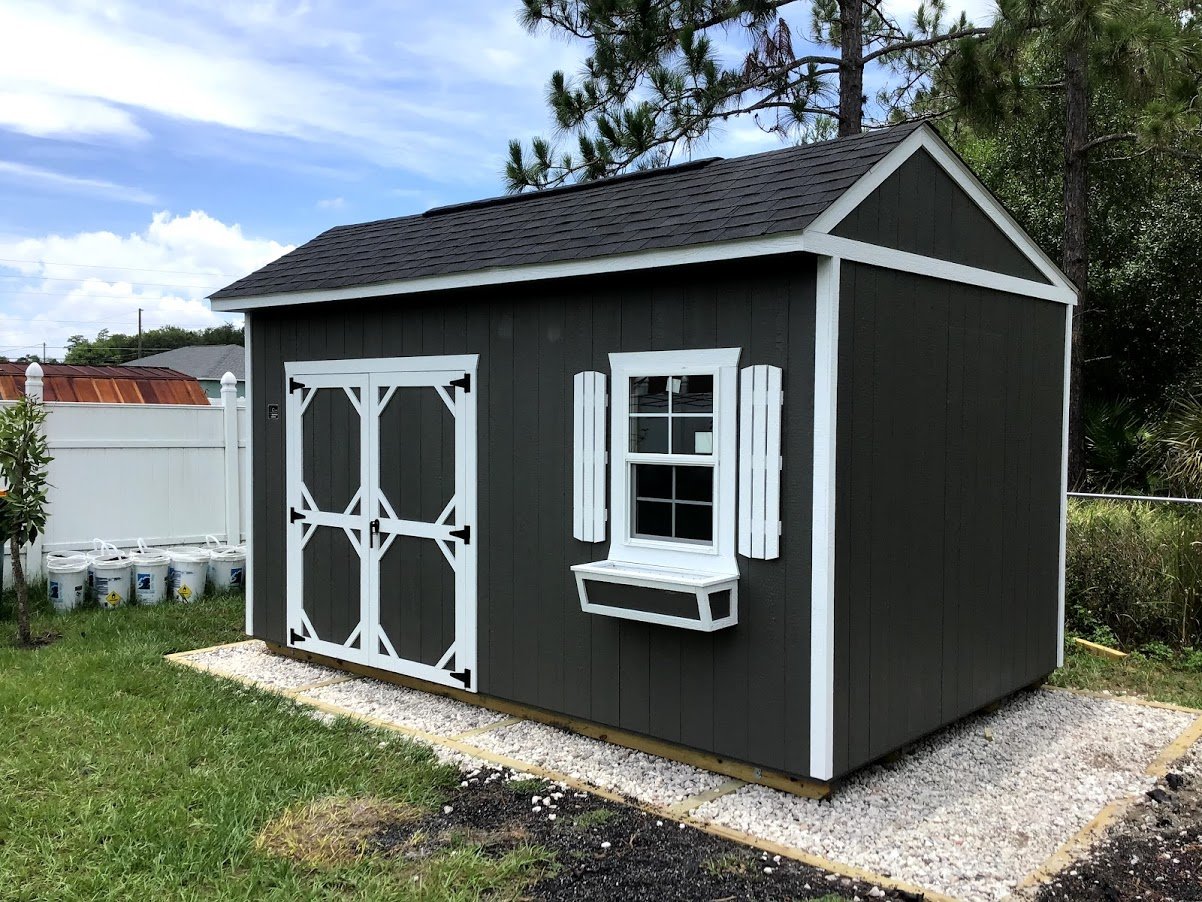
Let’s face it, placing your shed on a concrete or gravel base does give the building a more finished look, but it has zero effect on the building’s performance, warranty or longevity of the product.
We use a higher grade of treated lumber in our construction process which allows you to choose the foundation you want based on your preference and not out of necessity. This means you can landscape the way you want to around your shed.
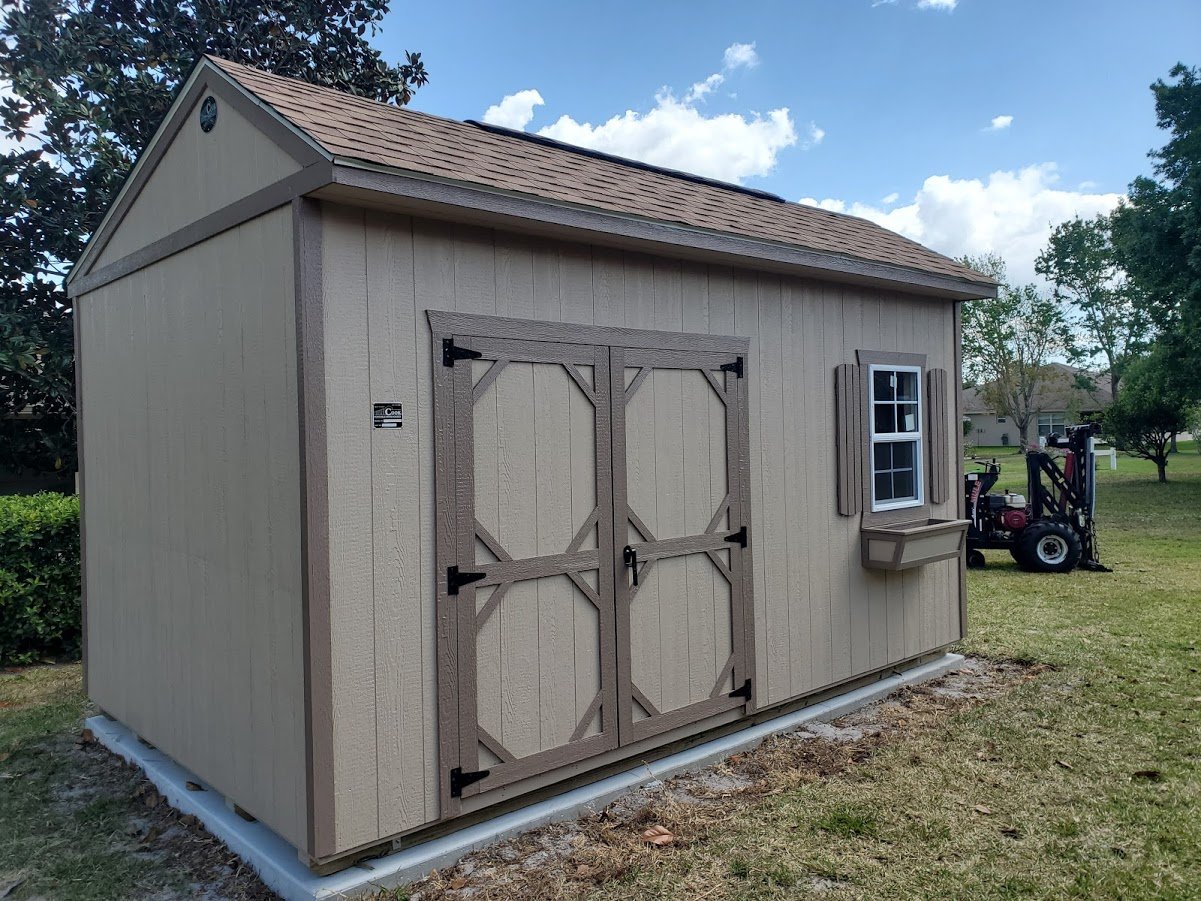
The main thing to remember is that whatever you choose, you want to ensure you are level. Occasionally we do place blocks under sheds that are sitting on unlevel ground. When this is necessary, it may be best to go with some sort of base for the shed to sit on, though again not absolutely necessary.
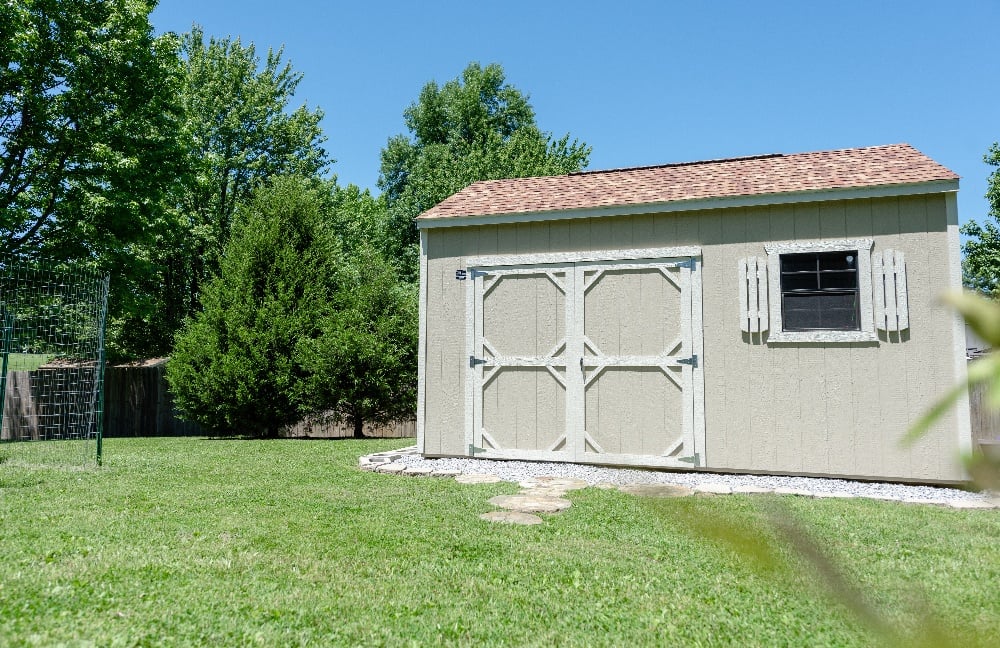
The choice is 100% up to you with a Cook portable building. You can go with concrete, gravel, mulch or nothing at all.
Do you have more questions about purchasing a shed? We’ve probably answered them before, so don’t hesitate to ask, or explore a few more of our articles:
-
5 Answers For Your Shed Search
-
Your Top 3 Questions Answered About Cook Sheds in 3 Minutes
-
Common Payment Questions about Cook’s Rent-to-Own Program
{{cta(‘1560f07a-f8df-4798-a772-98c7d47a421d’,’justifycenter’)}}
